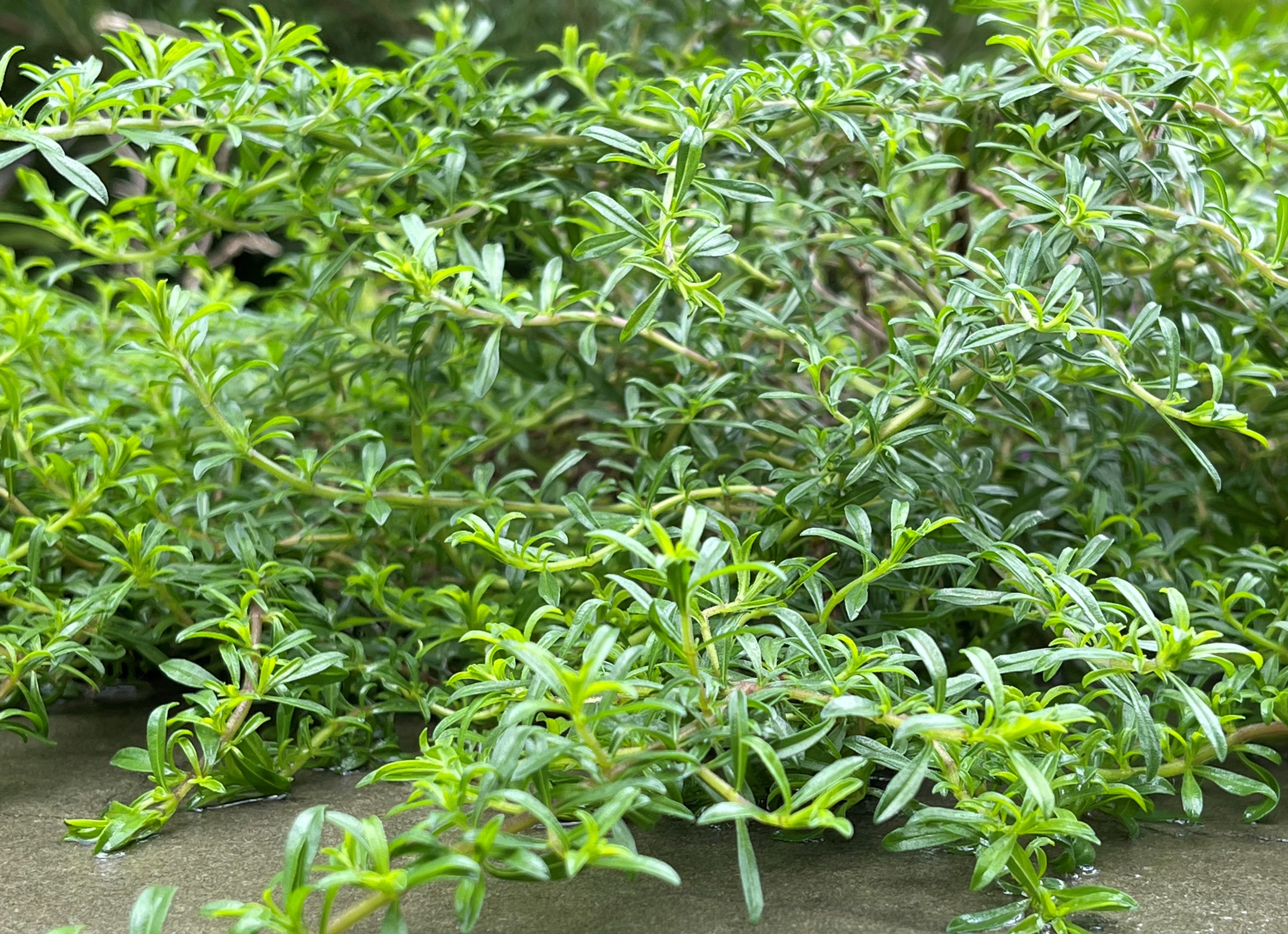September 13, 2022


One is known as having a special affinity for beans of every sort, the other is considered “not worth the trouble of growing” because it lasts for such a short time in the hot South. Differences aside, both are worthy of consideration. Summer Savory (Satureja hortensis) and Winter Savory (Satureja montana) are aromatic, flavorful and make delightful additions to the herb garden. Both varieties are currently growing in the Edible Landscape at Raincather’s Garden of Midway Hills.
Summer Savory is a cold-tender annual herb native to Southeastern Europe and the Mediterranean. It is the sariette (savory) of France, otherwise known as an essential ingredient in the herbs de Provence blend. Though not as popular as its perennial cousin, some believe it has the most superior flavor.
Winter Savory is also called dwarf savory or mountain savory. It is an especially decorative, low-growing and densely spreading shrub. Classical Greeks and Romans were familiar with this herb. Virgil, the Roman master of poetry, advised putting honey (saturated with the aroma of roses, thyme and savory) into the bee house as a solution to swarm’s disease. Hippocrates ascribed medicinal properties to it. Early American settlers treated colds and fever with savory tea.
General Characteristics of Both
Family: Lamiaceae (Labiatae) (Mint)
Type: Annual (summer savory), perennial (winter savory)
Location: Full Sun
Planting: Start seed in the winter, set out transplants in the spring.
Height: 8 to12 inches or somewhat taller
Spread: 20 inches
Bloom/Fruit: Blooms are small, white-to-lilac whorls of small star-shaped flowers.
Growth Habits/Culture: Summer savory is more upright with aromatic, dark green leaves and grows a little taller. It features square-shaped stems covered in tiny hairs. The ideal temperature range is 55-85˚F. Winter savory is more compact, low and spreading with needle-like, dark green leaves. It is a stiffer, woodier evergreen plant that will survive winter temperatures to around 23˚F. Savory requires rich, moist well-drained soil.
Taste: While both have a definite peppery bite reminiscent of thyme and marjoram, summer savory is fruitier, like apples and floral with a hint of lavender and basil. Winter savory with its coarser aroma and flavor is welcome at summer’s end when a fresh herb is desired during the cooler months.
Harvesting: When summer savory reaches 6 to 8 inches in height, start harvesting. After blooming, the plant is not as vigorous so be attentive about snipping off buds. Once summer savory flowers, its leaves are at their most flavorful. At this time, the entire plant can be clipped and used. Winter savory can be harvested for fresh use at any time.
Culinary Uses: Both summer and winter savory are traditional companions to all kinds of bean dishes, including soups, salads and spreads. Winter savory can be an alternative to sage in poultry dressing. Milder summer savory adds a flavorful punch to egg dishes, creamy soups and rich, cheesy casseroles. A liberal sprinkling of fresh leaves from either one gives new life to cooked vegetables. The good news is that both varieties can be used in much the same ways and are fairly interchangeable. When replacing winter savory with summer savory, add a touch more than called for in the recipe. When substituting summer savory with winter savory, start with about half the amount called for in the recipe and adjust according to taste.
Linda Alexander, Dallas County Master Gardener Class of 2008
Three recipes with savory:



